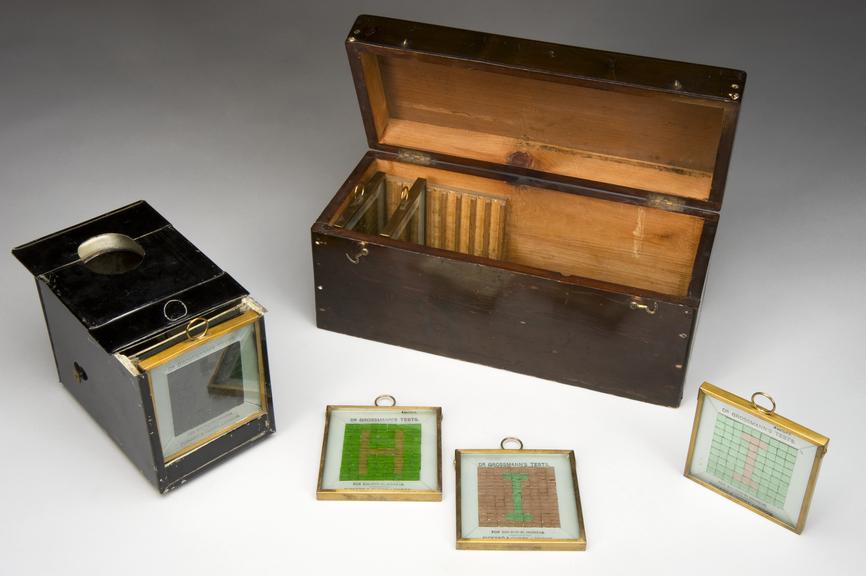Grossmann's colour vision test
Grossmann's colour vision test, London, England, 1890-1900
- Object Number:
- A662657/1
- type:
- vision test


Grossmann's colour vision test, in wooden case, by Pickard and Curry, English
Grossmann’s colour vision test is a practical test for colour blindness, developed by ophthalmic surgeon Dr Karl Grossman. The test consists of a metal box with an oil lamp inside. This illuminated glass tiles which show red letters on green backgrounds and green ones on red. Tiles were slotted into the open end of the box and patients ‘read’ the letter. If they could not differentiate between colours due to colour blindness, the tile appeared as one solid colour.
There are two main types of red-green colour blindness: protanopia or ‘red blindness’ and deuteranopia. Protanopia is where patients can see in shades of blue and yellow but little red. Deuteranopia is where the patient confuses reds with greens. It is often mistakenly called ‘green blindness.’ It affects more men than women and about 1% of the adult male population experiences one of these conditions. The test apparatus comes in a wooden case and was made in London by Pickard and Curry.
Grossmann's colour vision test, London, England, 1890-1900
Glass blub for Grossmann's colour vision test, London, England, 1890-1900